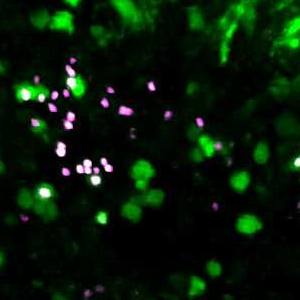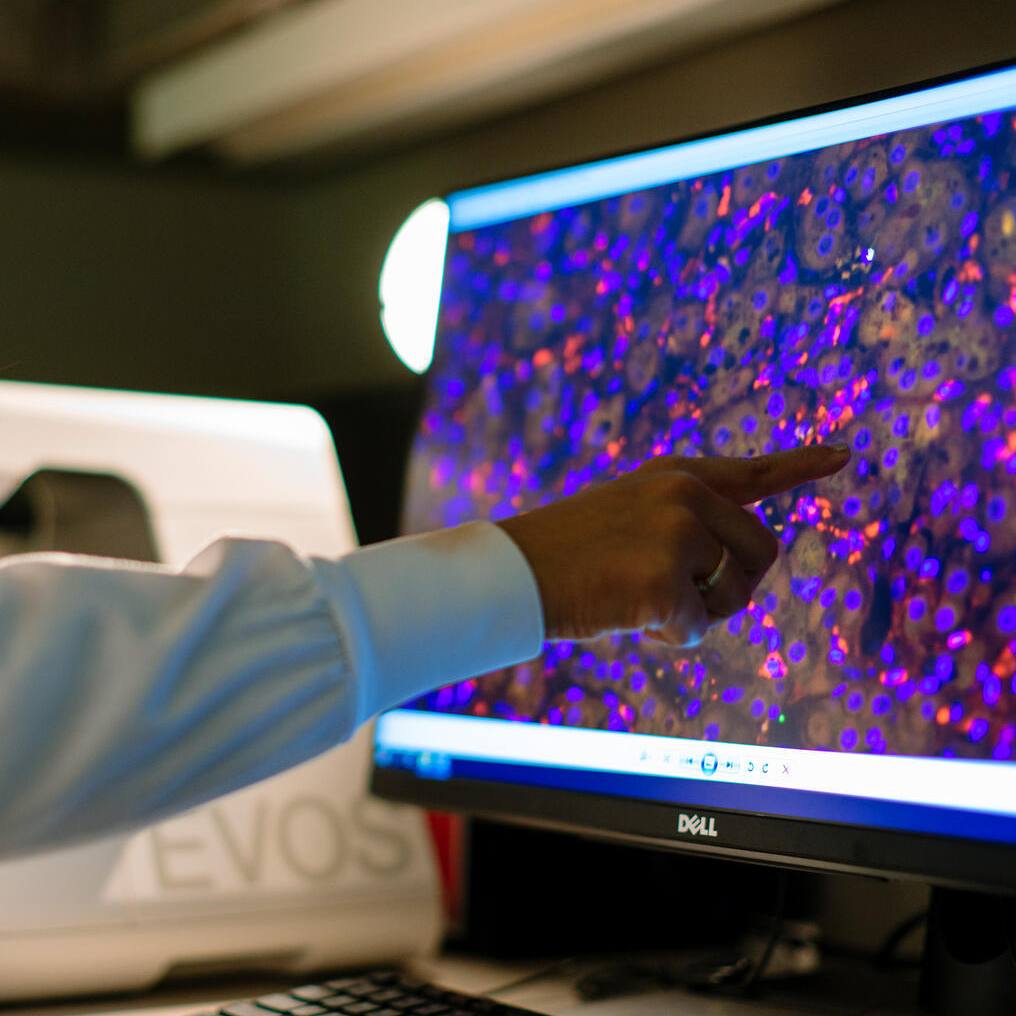-
Lymphoma Patients Event-Free Two Years after Diagnosis have a Normal Life Expectancy
 ROCHESTER, Minn. — Feb. 18, 2014 — Newly-diagnosed patients with diffuse large B cell lymphoma (DLBCL) who do not experience any cancer-related outcome events for two years after diagnosis have essentially the same life expectancy as they did prior to diagnosis, a Mayo Clinic study has found. Cancer related outcome events include disease progression or relapse, need for re-treatment or death.
ROCHESTER, Minn. — Feb. 18, 2014 — Newly-diagnosed patients with diffuse large B cell lymphoma (DLBCL) who do not experience any cancer-related outcome events for two years after diagnosis have essentially the same life expectancy as they did prior to diagnosis, a Mayo Clinic study has found. Cancer related outcome events include disease progression or relapse, need for re-treatment or death.
Journalists: Sound bites with lead author Matthew Maurer are available in the downloads.
Results of the study appear in the Journal of Clinical Oncology. The findings indicate that the 24-month mark is a significant milestone that can be used both as an effective way to counsel patients on their long-term prognosis and as an earlier endpoint for future studies of newly diagnosed DLBCL.
Diffuse large B cell lymphoma is the most common subtype of lymphoma with nearly 20,000 new cases diagnosed in the United States each year. Although the majority of patients can be cured with the current standard-of-care immunochemotherapy, 20 to 40 percent of patients will relapse, usually within the first year. Maurer and his colleagues decided to look more closely at the timing and type of cancer-related events in patients with DLBCL to see if there is a point where these events drop off and their risk of dying equals that of the general population.
“Patients want to know the good and the bad, and they want to know the natural history of the disease and their long-term risk of dying,” says Matthew Maurer, assistant professor of biostatistics and lead author of the study. “It is extremely useful to be able to assess how their risk of relapse changes as they remain in a disease-free state. If a patient is in event-free remission for two years, we can now say they are more likely to die from something else than from their lymphoma.”
Researchers followed 767 DLBCL patients who had been enrolled in the Mayo Clinic/University of Iowa Specialized Program of Research Excellence in Lymphoma (SPORE) molecular epidemiology resource database and who were treated with rituximab and anthracycline-based immunochemotherapy. They reviewed pathology and medical records and they noted cancer-related outcome events.
Researchers found that at diagnosis patients had a significantly decreased survival, but as patients remained in an event-free state, their outcomes improved until eventually equaling that of the age- and sex-matched general population at 24 months post-diagnosis. The results were confirmed in an additional 820 patients from two French lymphoma registries.
Maurer and his colleagues then conducted computer simulations of clinical trials to show that following patients with DLBCL for relapse beyond the two-year mark provided little benefit, as any events beyond that point were as likely to be unrelated to the lymphoma as they were to be related to the disease.
“It is important to note that reaching the two-year mark does not mean a patient is cured,” says Maurer. “We found that about 8 percent of those patients had a subsequent relapse. However, the low rate of relapse and potential use of salvage therapies for patients who do relapse means that the risk of death from lymphoma is lower than the risk of death from other health conditions such as heart disease or stroke. This highlights the importance of survivorship care for these patients”
Based on these results, Maurer and his colleagues have developed a risk model for DLBCL prognosis based on a two-year endpoint. A preliminary version of this model is available as a mobile application on the medical app site QxMD to help clinicians easily calculate prognosis for patients with DLBCL. Maurer and his colleagues are also interested in applying similar analyses to other types of lymphoma, though that work is still in its early stages.
Co-authors include Thomas Witzig, M.D., Carrie Thompson, M.D., Ivana Micallef, M.D., William Macon, M.D., Paul Kurtin, M.D., Cristine Allmer, Susan Slager, Ph.D., Thomas Habermann, M.D., and James Cerhan, M.D., Ph.D. , all of Mayo Clinic; Sergei Syrbu, M.D. and Brian Link, M.D. from the University of Iowa and Herve Ghesquieres, M.D., Ph.D., Jean-Philippe Jais, M.D., Corinne Haioun, M.D., Richard Delarue, M.D., Frederic Peyrade, M.D., Thierry Jo Molina, M.D., Ph.D., Nicolas Ketterer, M.D., Olivier Fitoussi, M.D., Emmanuelle Nicolas-Virelizier, M.D., Gilles Salles, M.D., Ph.D., and Herve Tilly, M.D. from the Lymphoma Study Association in France.
The study was funded by the National Institutes of Health, the Mayo Clinic/University of Iowa Lymphoma Specialized Program of Research Excellence, and the Henry J. Predolin Foundation.
About Mayo Clinic Cancer Center
As a leading institution funded by the National Cancer Institute, Mayo Clinic Cancer Center conducts basic, clinical and population science research, translating discoveries into improved methods for prevention, diagnosis, prognosis and therapy. For information on cancer clinical trials, call 507-538-7623.
###
About Mayo Clinic
Recognizing 150 years of serving humanity in 2014, Mayo Clinic is a nonprofit worldwide leader in medical care, research and education for people from all walks of life. For more information, visit 150years.mayoclinic.org, http://www.mayoclinic.org/ and newsnetwork.mayoclinic.org.
MEDIA CONTACT: Joe Dangor, Mayo Clinic Public Affairs, 507-284-5005, newsbureau@mayo.edu







